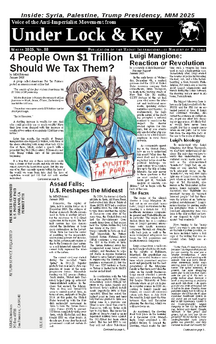
CDCR Uses Prop. 57 as Leverage Against Prisoner Organizing
It has been brought to my attention that the California Department of Corrections and Rehabilitation(CDCR) is trying to propose changes to family visiting regulations. By using Proposition 57 as leverage to divide the masses, this policy is discriminatory towards our comrades who get family visits. This policy does not reduce violence, and/or decrease contraband and/or promote positive behavior and/or prepare you for a successful release or rehabilitation as claimed in the CDCR proposal.
In a recent announcement of proposed policy changes to the telephone system and family visiting eligibility, the CDCR issued the statement: “All inmates are encouraged to continue with positive programming and to not participate in any mass strike/disturbance. These types of disturbances impact the many programming opportunities for rehabilitation and reduction in sentence afforded by Proposition 57.”
This new policy is trying to discourage the masses from using their constitutional right to peaceful protest, by pitting those working for sentence reductions under Prop. 57 against those organizing for justice and change. CDCR is back with their reactionary divide and conquer ideals. CDCR is a functional enemy of using the word rehabilitation. CDCR will never produce justice or correctness toward their captives. So I ask this question to the masses: Does Prop. 57 support us or does it help CDCR maintain and expand a repressive system against captives?
CDCR is abusing Prop. 57 and using it as leverage and against all organizing activity. This direct or indirect association of Prop. 57 to family visiting and discipline of prisoners promotes confusion and non-justice. The people who voted for Prop. 57 did so with the intent of trying to do justice to correct a broken system. They intended to return humyn beings to their families.
Without justice, there is no life in people. Without justice, people do not “live”, they only exist and that’s good for CDCR. (Wake up comrades!) I have one message for CDCR, “Where there is justice, there is peace.”
[Proposition 57 was passed by California voters in November 2016. Its main purpose is to make it easier for prisoners with non-violent convictions to get a parole hearing, and allow prisoners who are not lifers or on death row to earn good time and earlier release through programming.]








